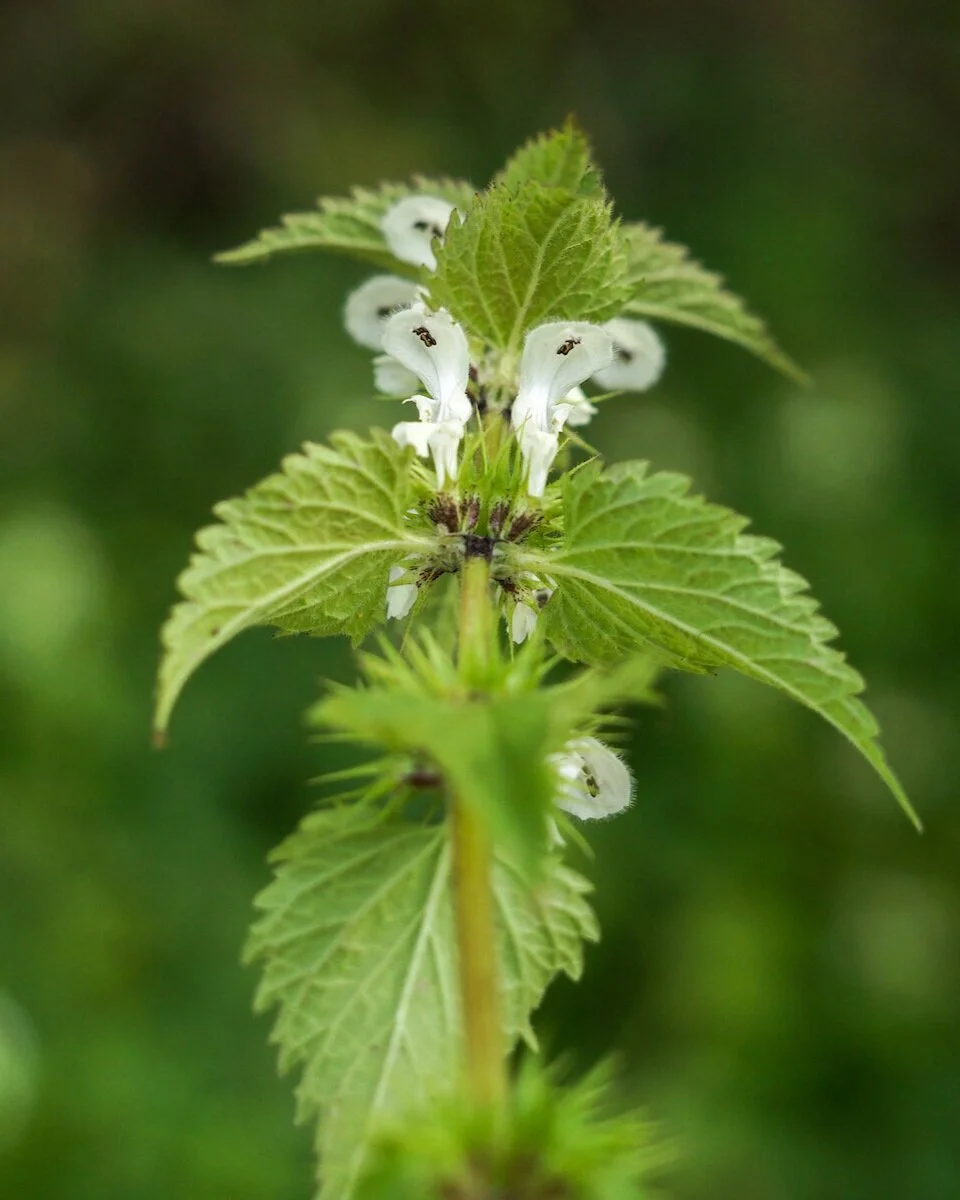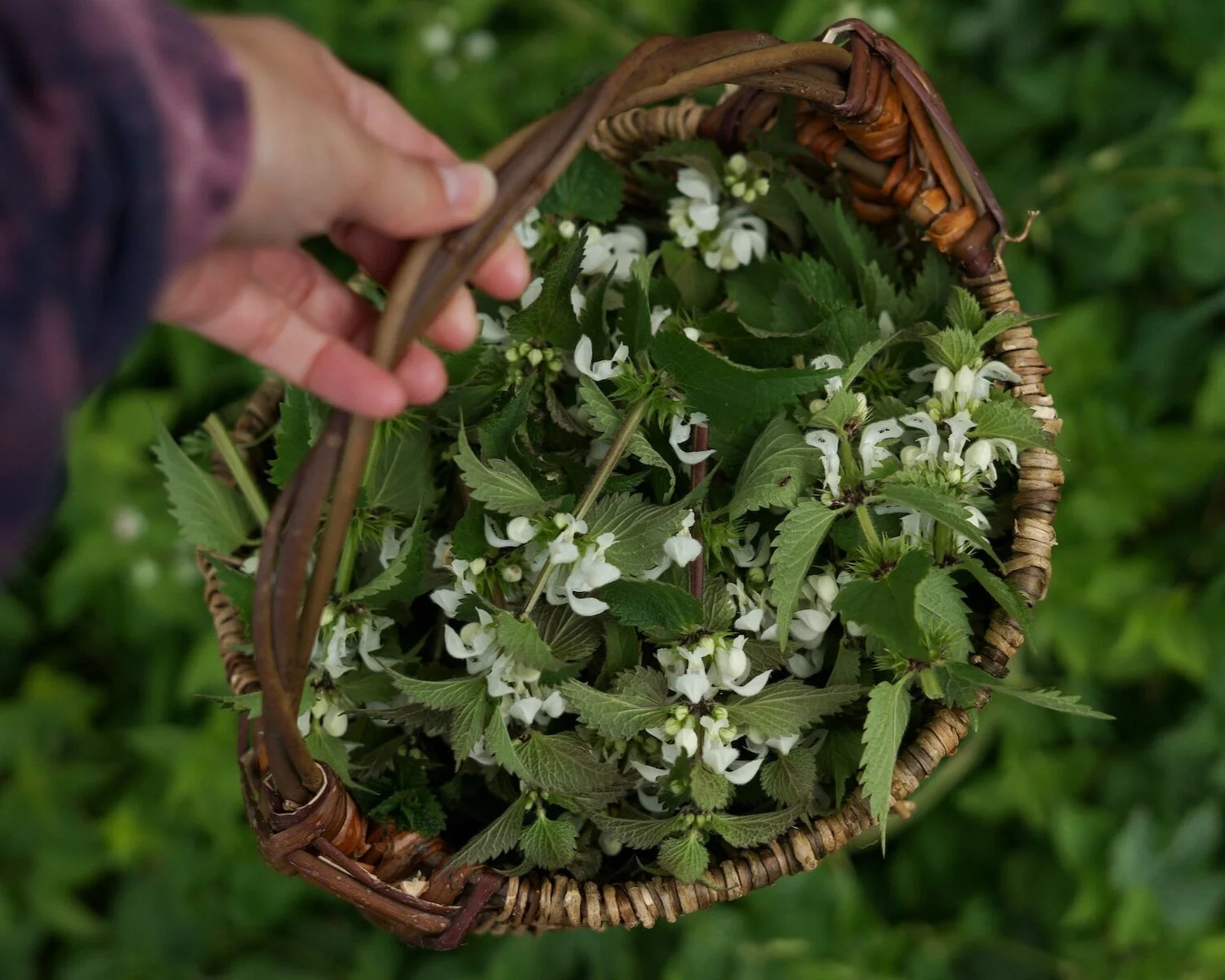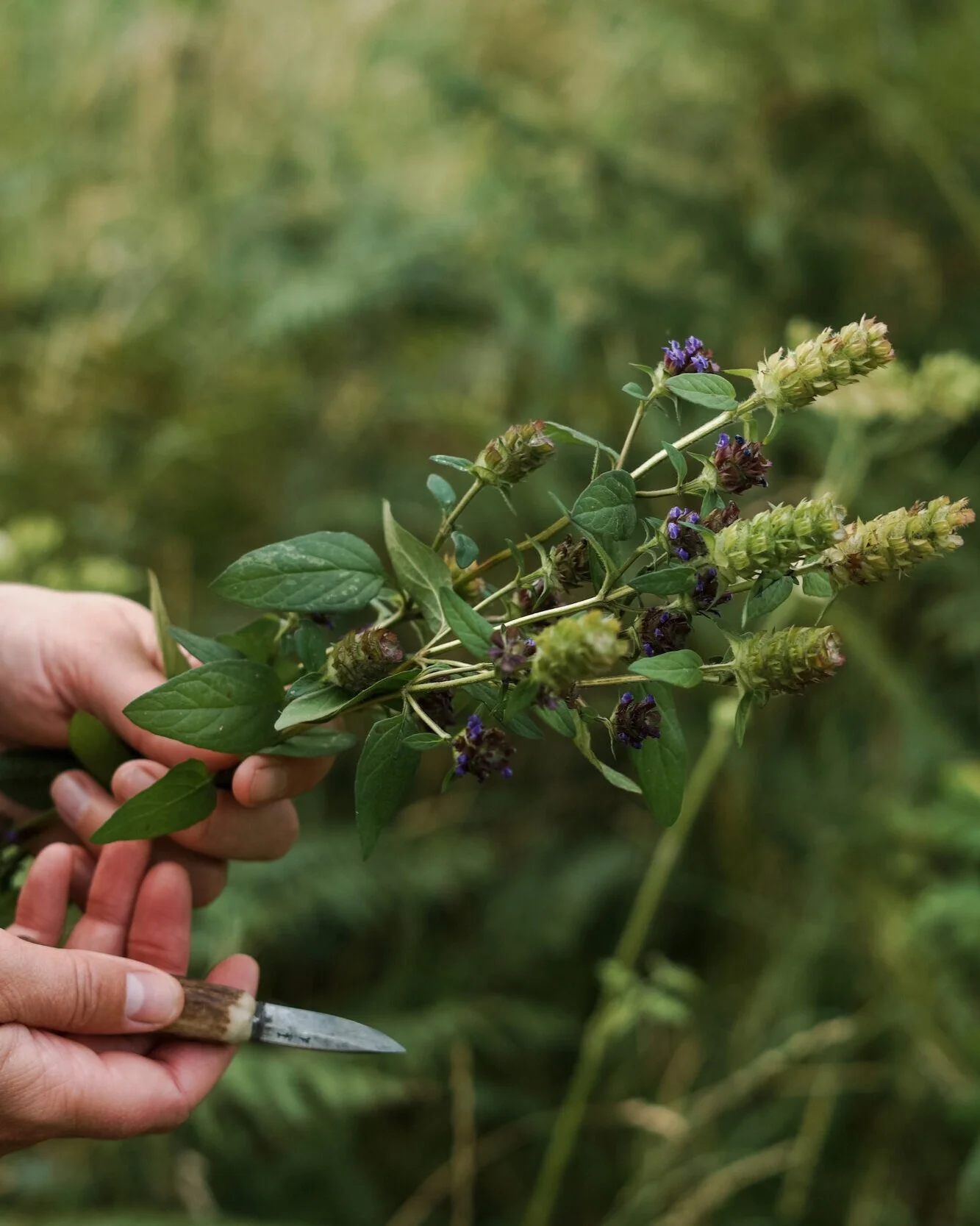Summer Recipes: Wild Flower Tea
Words by Emma Hughes. All photos credited to Miscellaneous Adventures.
Article originally published in the Summer edition of my indie paper, The Aligned Times.
There’s something extra special about drinking a cup of warm tea made from leaves and flowers collected on my morning wander through the woodland, down past the stream and back up to our home nestled on this land we are fortunate enough to call home.
Preparing and drinking it allows me a moment to connect fully with the plant, sensing the goodness it contains, noticing the taste and smell, considering similarities with other plants and wondering how they might work together.
It’s a quiet, connective moment; something that brings calm and clarity to an otherwise busy day full of the usual distractions of school runs, work and general life chores.
For me, this is what foraging is about. I do it from a nature connection perspective. I’ve found that by learning about the different properties of the wild plants growing on the land we look after at home, I am more inclined to remember their names, pointing them out to friends when I spot them in their gardens or out on a walk, and excitedly telling them what they can make or do with the flowers, leaves or roots.
I’ve always loved being in nature but foraging has unlocked a new level of curiosity for me and I’m keen to look up every new plant I spot to find out what magic it might hold within it’s cellular being.
At this time of year, it can be a little overwhelming with plants bursting into life everywhere and it’s hard to keep up with learning names and new species but I try to build on my knowledge season on season, adding new plants to my memory bank (and notebook), experimenting with them by making syrups, tinctures, teas and balms to add to my growing home apothecary.
I do have some favourites though - friends you might say - whom I look forward to welcoming back each year as they poke their first leaves up through the soil and wave hello.
White Dead Nettle (Lamium Album)
Not actually a nettle but another member of the mint family, white dead nettle flowers from spring until autumn and sometimes into winter.
Identification
White Dead Nettle leaves look similar to that of nettles (see the image above), but are stingless, hence the name, ‘dead’ nettle. The obvious difference to stinging nettles is the white flowers that grow in whorls around the stem.
It’s said that fairies leave their slippers in these flowers each night, and if you look closely you’ll see two tiny pairs in each flower. Many people remember plucking these flowers as children and sucking the sweet nectar from them.
Benefits
I recently discovered (through Ali English’s book, ‘Wild Medicine: Spring’) that a calming, mood lifting tea can be made from the flowers (in a similar way to primrose). I have been drinking this recently and can attest to its lovely, delicate flavour and it does indeed lift the spirits (but who wouldn’t feel happy drinking a cup of tea made from beautiful, nectar rich flowers?!)
To Make the Tea
Collect around 15 flowers per cup (you could collect the tops of the plant, including the leaves, which can then be used in cooking, like any spring green, once you remove the flowers).
Pour just-boiled water over them, leave for a few minutes, strain and enjoy!
Self Heal (Prunella Vulgaris)
This lovely little purple flower pops up everywhere. You’ll find it in gardens, parks, meadows and anywhere grass grows. It will stay quite small where grass is frequently mowed, but if allowed it can reach around 30cms tall.
Identification
A member of the mint family Self Heal begins to flower in late May/early June and will continue to do so until as late as October. Identify it by its dense head of tiny purple flowers at the top of the stem with a pair of leaves at its base followed by further pairs of leaves down the stem.
Benefits
All the aerial parts can be used medicinally. Self Heal (as the name suggests) holds a host of medicinal benefits including anti-viral properties. I have made balms from it which helped enormously with my regular coldsore outbreaks. It’s also great for sore throats and mouth ulcers.
To Make The Tea
Collect a handful of leaves and flowers per cup and pour just boiled water over them in a cafetière or teapot. Leave for around 3-4 minutes before straining. Makes a comforting, fragrant tea.
Please Forage With Care
It’s important to bear in mind that white dead nettle is loved by bees, so please only gather a few flowers and only where they grow in abundance.
Both of these plants are very safe to use and have very few reported allergies, but as always, everybody is different, so do go slow at first to be sure you’re not intolerant.
A Note on Accessibility
I’d love to say that foraging is something that is open to everyone, and it definitely is one of the most accessible nature based activities. However, sadly, there are many people for whom access to nature and safe areas in which to forage (i.e away from areas that are sprayed with weedkiller, or close to roads and traffic) are not so freely available.
At Miscellaneous Adventures, we teach woodland based workshops, which is our way of bringing people who wouldn’t usually have access to nature to come and spend the day learning about a woodland eco system, gaining new skills (including plant ID and basic foraging) and hopefully, going away full of enthusiasm for nature and a desire to help protect it.
We offer two free places on each workshop to those who are not in a position to pay and feel strongly that the opportunities we have been afforded - to live and work in nature - should be available to everyone.
I believe that a deep connection to nature is vital for a healthy, happy life, not just for us as a species but also for the future of our planet.
Miscellaneous Adventures
Emma and Andrew live and work in the woods, teach workshops, run a creative studio, make wooden goods, and work on practical conservation projects (and raise a small human).
The many threads of their work are connected by the idea that developing a deeper relationship with Nature has the potential to create positive change. Their workshops include spoon carving, bushcraft, journalling and walks and talks.
Their online shop is stocked with handmade goods made in small batches from wood harvested as part of their woodland management and conservation work. What they make is dictated by the materials at hand, and as such their range of goods is ever-changing.






